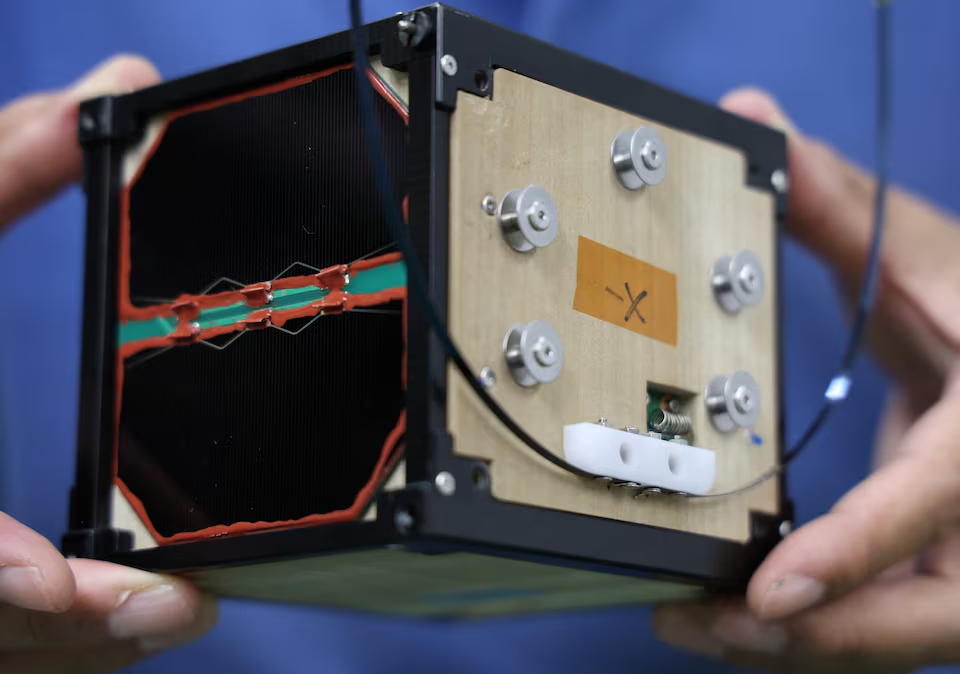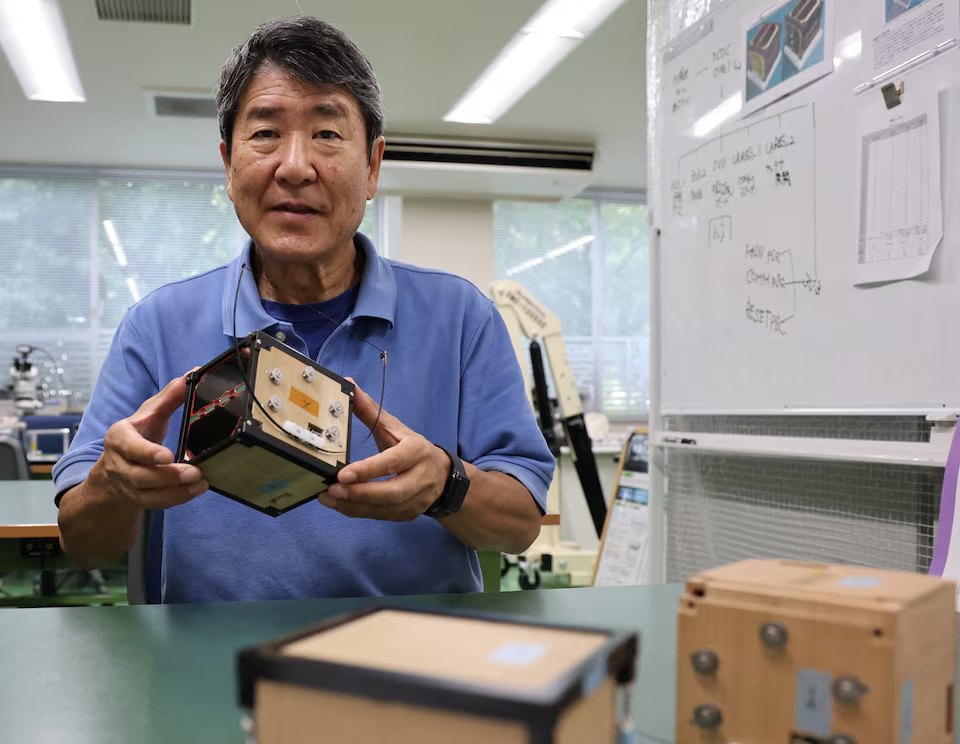Japanese scientists marked a historic moment on Tuesday by sending the world’s first wooden satellite into space, pioneering the use of timber for sustainable exploration.
The satellite, named LignoSat, was developed by Kyoto University in partnership with Sumitomo Forestry. This pioneering project aims to explore wood’s viability in lunar and Martian missions.
According to Reuters, LignoSat is part of a SpaceX mission to the International Space Station (ISS), where it will later be released into an orbit approximately 400 km (250 miles) above Earth.
The palm-sized satellite is intended to demonstrate the practicality of wood in space—a renewable material that could support future habitats for humans beyond Earth.


Takao Doi, a former astronaut and current researcher at Kyoto University, shared the vision behind the project: “With timber, a material we can produce by ourselves, we will be able to build houses, live and work in space forever.”
The team has a long-term vision of planting trees and constructing wooden buildings on the moon and Mars, and LignoSat is a first step toward proving wood’s suitability for space.
Koji Murata, a forest science professor at Kyoto University, pointed out that the use of wood in early 20th-century aircraft supports the feasibility of wooden spacecraft today.
“In space, wood remains durable without exposure to water or oxygen, which would normally cause it to decay or combust on Earth,” he noted.
In addition to its durability, a wooden satellite offers an environmental advantage upon decommissioning.
While conventional metal satellites release harmful aluminium oxide particles during re-entry, wooden satellites simply burn up, reducing atmospheric pollution.
Doi even suggested that metal satellites may be restricted in the future due to their environmental impact, making wood a compelling alternative.
“Metal satellites might be banned in the future. If we can prove our first wooden satellite works, we want to pitch it to Elon Musk’s SpaceX,” Doi added.
Industrial Applications for Timber in Space
After a 10-month ISS experiment, the researchers determined that honoki wood, a Japanese magnolia species traditionally used in sword sheaths, is ideal for space.
Honoki’s durability and natural strength make it an optimal choice, and the LignoSat was crafted using a traditional Japanese method that avoids screws or adhesives.
During its six months in orbit, LignoSat will monitor how wood withstands space’s extreme conditions, where temperatures shift between -100°C and 100°C every 45 minutes.
The satellite will also measure wood’s capacity to shield semiconductors from space radiation, which could have significant applications, such as constructing radiation-resistant data centers in space, according to Kenji Kariya, a manager at Sumitomo Forestry’s Tsukuba Research Institute.
This bold experiment marks a significant step toward sustainable space exploration and could reshape how we think about building materials for extraterrestrial environments.


